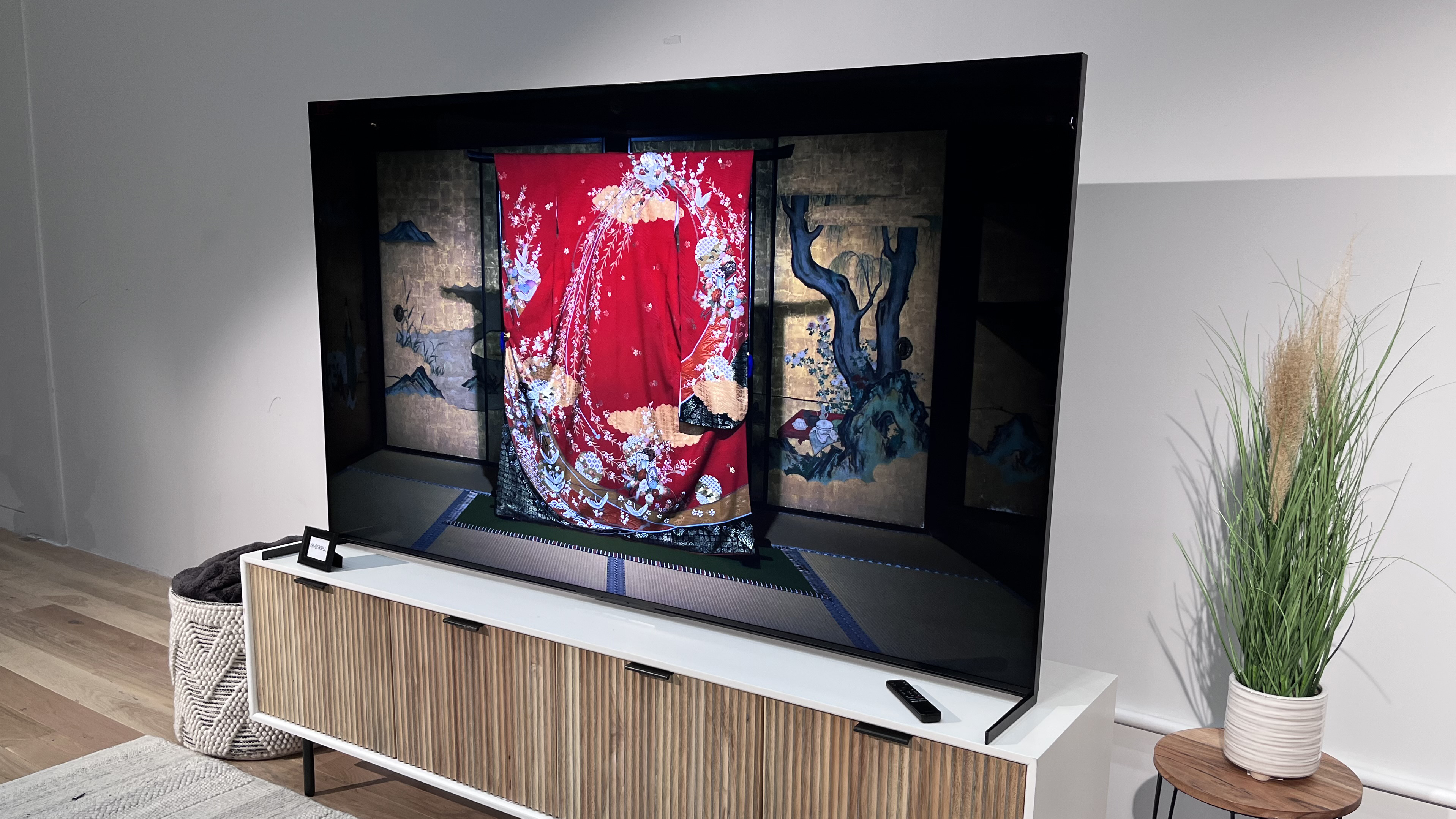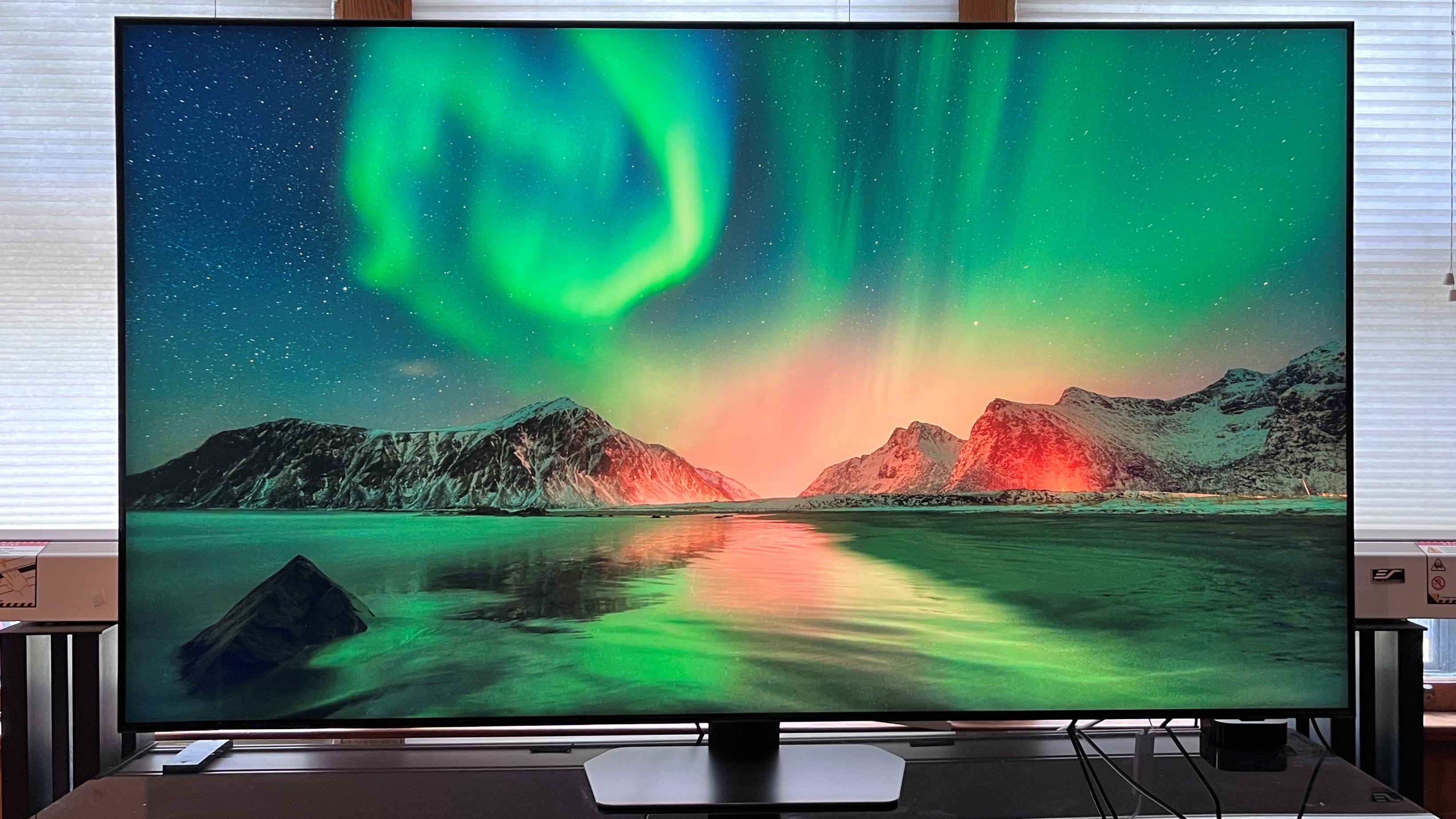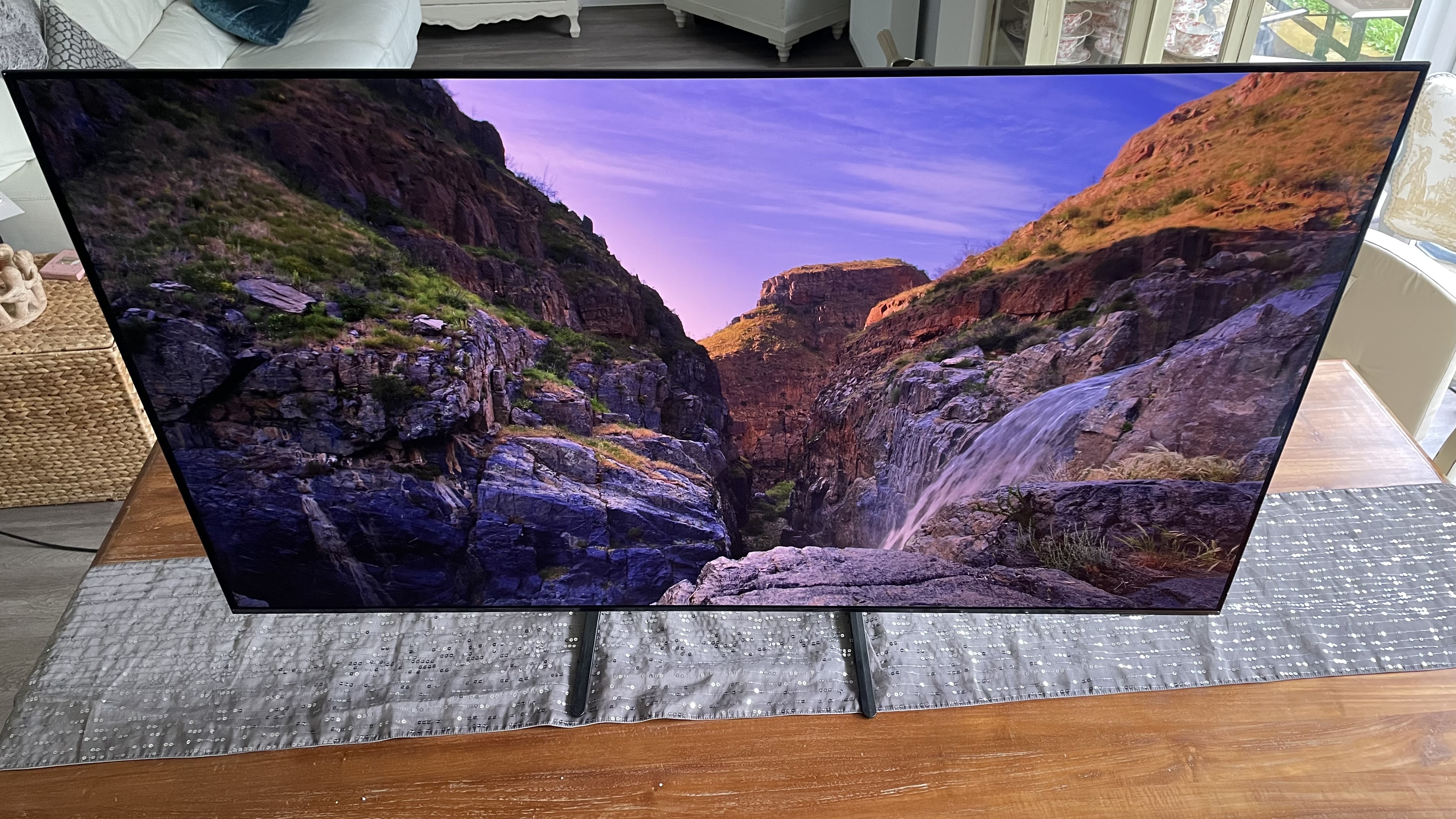Sony's new mini-LED 4K TV tech should have Samsung worried, but here’s why I think OLED will still reign supreme
Sony may backs its own special mini-LED tech over OLED

Sony has revealed it’s working on a new type of mini-LED tech that’s not only going to offer more brightness, but also a new level of precision that mini-LED hasn’t achieved so far, allowing for better contrast and deeper black levels it hopes will rival OLED.
As reported by What Hi-Fi?, this new backlight tech takes mini-LED to a new level. Mini-LED in its current form, found in some of the best TVs around such as the Samsung QN90C and Hisense U8K, means that much smaller LEDs are used in the TV's backlight, meaning you can have many more of them, resulting in a more balanced picture that not only has high brightness, but stronger contrast compared to a standard LED panel because it can have more local dimming zones.
Showing a prototype of the new mini-LED tech, Sony’s engineers said that "it’s not about the size of the LED that counts, but how you use it", according to What Hi-Fi. In a nutshell, Sony has developed a new LED driver (supposedly the size of a grain of rice) that will consist of six ‘channels’ and consist of four LEDs (although Sony makes it clear this will vary from model to model and depend on size of model as well). These will each make a zone that can be controlled independently, but the amount of energy supplied to each can be controlled too, and affect the amount of light produced, meaning there’s not only better control of lighting in small areas, but they’re more energy efficient.
During this demo, Sony showcased the new prototype backlight TV alongside its 2023 flagship mini-LED, the Sony X95L and its mid-range OLED, the Sony A80L. According to What Hi-Fi?, the difference was apparent as the prototype was not only brighter, but had better colors than both the A80L and X95L. Another important difference was the prototype’s greater dimming precision and better black levels and shadow detail than the X95L, showing an improvement over current mini-LED tech.
So what does this new mini-LED tech have in store for the TV industry as a whole – will it de-throne OLED, or push Samsung out as the mini-LED leader?

Samsung’s next great rival
Samsung has always been a champion of mini-LED technology, used it in its Neo QLEDs TVs for the last few years. Many other brands such as LG, TCL, Hisense and Sony itself have embraced mini-LED, but Samsung’s remains the most popular (based on my experience in AV retail, anyway), and its mini-LED sets always score very highly in reviews.
But, with the introduction of this new and ‘improved’ mini-LED tech from Sony, Samsung could be looking at a usurper to its mini-LED throne. Something we found in a lot of our mini-LED reviews, including Samsung’s, is that backlight blooming (the appearance of a halo effect around objects) and black uniformity (the ability to evenly display black tones across a screen) are still imperfect in mini-LED’s quest for brightness, losing out to OLED's ability to dim each pixel individually. If this prototype demo is to be believed, Sony seems to have reduced those issues, with refined contrast and better black levels than the standard mini-LED used in its flagship Sony X95L.
The new mini-LED tech even showcased better color than both the X95L and A80L OLED, and we loved the lifelike colors of the A80L in particular.

OLED will still be supreme – for now
Some of the most popular TVs on the market are OLED TVs. The Samsung S90C was a smash hit in 2023, not only topping several lists such as best OLED TVs, but also winning TV of the year at the TechRadar Choice Awards 2023. This was because it combined dynamic color with stunning contrast whilst still maintaining great brightness (for OLED) and deep black levels, thanks to its QD-OLED technology.
One area that OLEDs have struggled in the past though is with brightness, although TVs such as the LG G3 are using micro lens array (MLA) tech to improve this, while QD-OLED also helps. But for the mid-range OLEDs, should this new mini-LED tech spell their doom?
Personally, I don’t think so, and that’s for a couple of reasons. Despite mini-LED improving, I think it will be some time before we see a mini-LED TV beat an OLED in terms of achieving true black tones. Mini-LED, even Sony’s prototype, still relies on local dimming zones as opposed to individual pixels being dimmed in OLED, allowing for greater contrast.
Another reason is cost. With the introduction of a new technology that means more custom parts and production, it’s likely that when this new mini-LED Sony tech launches, it will come with a steep price tag. Sony's TVs always come with a price premium even when using mostly the same tech as other TVs (see: the A80L OLED). This is during a time where OLEDs are actually becoming more and more affordable, with the Samsung S90C even giving us more budget-friendly access to QD-OLED.
Yes, this new mini-LED tech will more than likely provide more brightness, which Sony is focused on, as it believes movies will start to be mastered for brightness of over the 2,000 nits that OLEDs have peaked at (according to What Hi-Fi?) – but as I said above, OLED’s ability to self-dim gives the impression of better color accuracy, deep black tones and better shadow detail, seemingly giving a better picture overall. Even if Sony's tech is borderline as good as OLED in this regard, if it's way more expensive, OLED will be just fine. Long-term, maybe that changes – but by that time, maybe micro-LED is crashing Sony's party anyway.
Final Thoughts
Whilst I do believe OLED will still reign supreme in the TV market, the prospect of Sony’s improved mini-LED tech is an interesting one that will no doubt shake things up. Last year, I saw a mini-LED demo without the pixels (where only the backlight was on display) and could see clearly the importance of local dimming zones. So if Sony can make local dimming even better, then mini-LED could be a real contender in the TV world. But, I still think it’s got a way to go yet before it tops OLED, especially as more brands are nailing the OLED and brightness combo.
@techradar ♬ Pretty - Coco & Clair Clair
You might also like....
- LG unveils 2024 OLED TV lineup
- Samsung QN85C review
- Sony X90L review - an LED that rival mini-LED TVs
Get daily insight, inspiration and deals in your inbox
Sign up for breaking news, reviews, opinion, top tech deals, and more.

James is the TV Hardware Staff Writer at TechRadar. Before joining the team, he worked at a major UK based AV retailer selling TV and audio equipment, where he was either telling customers the difference between OLED and QLED or being wowed by watching a PS5 run on the LG 65G2. When not writing about the latest TV tech, James can be found gaming, reading, watching rugby or coming up with another idea for a novel.